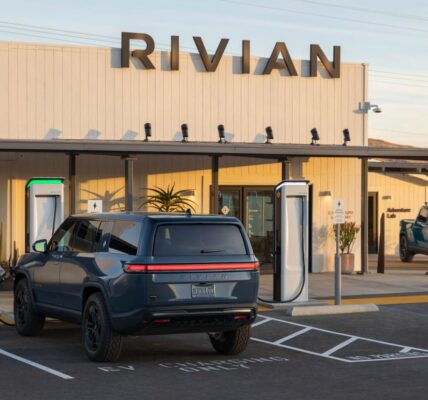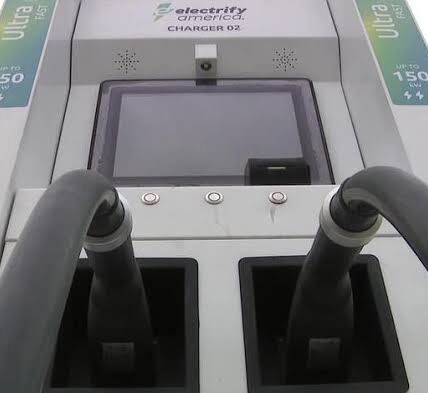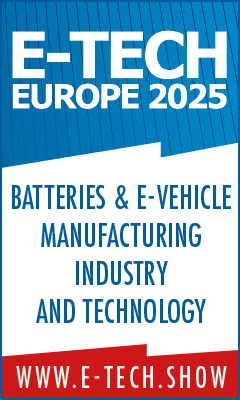Leasing an electric vehicle (EV) is now the cheapest option for new car buyers across the United States – thousands of dollars cheaper per year than buying or leasing a gasoline-powered vehicle.
This new economic dynamic is being driven by several factors: Falling EV lease prices, new federal tax incentives from the Inflation Reduction Act (IRA), lower operating and maintenance costs of EVs compared to gas-powered vehicles, and rising interest rates.
Fossil fuels are responsible for up to 40% of recent inflation, and oil market volatility has made pain at the pump a recurring headache for American households since the mid-1970s. For U.S. drivers who want to save the most money, and get off the fossil fuel rollercoaster, the choice is clear: Lease an EV.
Leasing An EV Is The Cheapest Option Across The U.S.
New Energy Innovation research identified this trend by analyzing the costs of buying and leasing 14 EV and comparable gas-powered vehicle models in all 50 states. The research included financing and lease costs, state taxes and fees, state and federal rebates and tax credits, fuel costs, and maintenance and insurance costs.
Leasing an EV is the cheapest monthly option available to U.S. drivers, cheaper than leasing a comparable gas-powered vehicle, or buying an EV or comparable gas-powered vehicle. Leases are paid monthly, often with a small or no down payment, meaning new car buyers can start saving money the day their car is driven off the lot.
And savings from leasing an EV can stack up fast. The Ford Mach-E, for example, is $500 cheaper per month and nearly $7,500 cheaper per year versus a comparable gas-powered vehicle. And the Tesla Model Y, which has been the best-selling EV in America since its introduction, is $425 cheaper per month or more than $5,000 cheaper per year compared to its gas-powered equivalent.
As EVs become more popular among American drivers, automakers have invested billions in new EV manufacturing and models, spurring competition among EV dealers and expanding available EV inventories.
These new dealer incentives and expanding supplies, coupled with IRA incentives, pushed last month’s average EV transaction price down 20% compared to the same time last year, even though transaction prices among all vehicles rose 1.6% over the same period. EV savings will shift into the fast lane whenever oil prices increase again to 2022 levels, about 40 cents per gallon higher than today.
This cost dynamic isn’t limited to leasing an EV – it’s also showing up for new EVs that are financed to own, even compared to gas-powered vehicles that are financed to own. That’s important to remember considering nearly 80% of Americans finance their new cars,compared to 18-19% who lease, and just 1-2% who purchase new cars outright.
Smart Policy Accelerates EV Sales And Consumer Savings
Smart EV policy has accelerated this trend. The IRA introduced a new $7,500 tax credit for leased EVs last year, and when dealers pass this credit through to new car buyers, they reduce lease payments and increase driver savings.
EVs are already cost-competitive with gas-powered vehicles, even without the federal incentive, but the IRA’s EV tax credit makes monthly lease prices 12% cheaper on average when dealers pass it along to lessees – making almost every EV model cheaper to lease than gas-powered vehicles.
Additional federal and state policy action can give the green light to even more EV sales moving forward. California’s Advanced Clean Cars II regulation, which set ambitious state-level zero-emission vehicle sales standards and could be adopted by the 16 “Section 177” states which adopted California’s earlier clean cars standards, could combine with the IRA incentive to help EVs compose 66% of the U.S. car market in 2035.
New proposals by the U.S. Environmental Protection Agency to reduce tailpipe pollution could make this transition happen even faster, pushing EVs up to 67% of national light-duty car sales by 2032, the final year of the IRA EV tax credit.
Billions in federal incentives from the Infrastructure Investment and Jobs Act are building EV charging stations across the country, and these dollars are being leveraged by nearly every state as the Biden administration aims to build a national network of 500,000 EV chargers by 2030.
Corporate action can also expand charging options – Tesla, which has the country’s largest EV charging network, is opening at least 7,500 of its chargers to non-Tesla drivers by the end of 2024.
Actions like these can leave range anxiety in the rear-view mirror and encourage more drivers in more parts of the country to consider an EV for their next vehicle.
Easy access to EV charging then becomes an on-ramp to consumer savings. Recent modeling shows that every EV model in every state is cheaper to charge than filling up a gas-powered vehicle, even if fuel prices are at their recent low mark.
Washington State has the biggest price difference – an average EV sedan is $60 cheaper to fill up and an average EV truck is nearly $82 cheaper to fill up than comparable gas-powered vehicles. Even in Hawaii, home to the smallest price difference, an average EV sedan is $27 cheaper to fill up and an average EV truck is $25 cheaper to fill up than comparable gas-powered vehicles.








